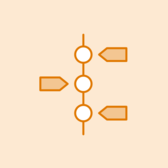Many models are available for pre-clinical Parkinson’s research. MJFF is committed to helping researchers choose the most appropriate pre-clinical model for their projects.
Types of Parkinson's Pre-clinical Models
Each category of pre-clinical model has common advantages and disadvantages that should be considered when designing pre-clinical studies.
Please note, there is no “best” pre-clinical model of Parkinson’s disease. We do not advocate for the use of one particular model and cannot provide advice on which model to use for your study. Our general recommendation is to choose a model that is well-represented in the literature, affects your mechanism of interest and displays the appropriate pathological phenotypes for your study.
-
Genetically Modified
Advantages:
- Knockin models have near-physiological expression levels and normal spatiotemporal expression
- Good for targeting clinically-relevant pathways
Disadvantages:
- Transgenic models may have supra-physiological expression levels and expression of transgene in cell types that do not normally express the protein
- Possibility of developmental compensation
- Lack of motor deficits in many models
- Pathology often only at advanced age
Helpful Resources:
-
Viral Vector-mediated Overexpression/Knockdown
Advantages:
- Spatiotemporal control of a progressive nigral lesion with rapid onset leading to motor deficits
- Ability to design for an internal control and the adaptability of this model for multiple species.
Disadvantage:
- Use of supraphysiological expression levels
- Expression and pathology limited to area of injection while pathology in PD often occurs in multiple brain regions and peripheral tissues
- Virus can induce toxicity - proper controls must be included
-
Alpha-synuclein Pre-formed Fibrils
Advantages:
- Pathology occurs in endogenous synuclein
- Spatiotemporal control of a progressive nigral lesion with a protracted time course
- Pathology in multiple brain regions relevant for PD
- Good for studies targeting extracellular alpha-synuclein and the alpha-synuclein seeding hypothesis
Disadvantages:
- Often requires very long time points to observe nigral neuron loss (6 months is common)
- Less robust motor deficits
Helpful Resources:
- MJFF has published a best practices guide for generating and using synuclein pre-formed fibrils and a summary of phenotypes reported in this model.
- MJFF led a workshop in 2022 bringing leaders in the PFF model together to discuss the protein, model phenotypes, and recent advances in using brain-derived material. A summary of the workshop discussion can be found here.
-
Neurotoxins
Advantages:
- Spatiotemporal control of a progressive nigral lesion with rapid onset
- Models display motor deficits and oxidative stress
Disadvantages:
- Lack of alpha-synuclein pathology (exception being chronic MPTP treatment)
- Debate over clinical relevance
-
Yeast/Zebrafish/Drosophila/C Elegans
Advantage:
- High-throughput screening for therapeutics
- Fewer neurons to enable study of tractable pathology and cell death
Disadvantage:
- Models do not always express a homolog for the human gene of interest
- Models are too simplistic to model the complexity of the human brain and PD
MJFF also provides overviews of models by target, pathway, and symptom. These guides provide an overview of commonly used models as a starting place for selecting the most appropriate model for your research. The overviews are by no means comprehensive, and other models may be available that suit your studies.
Commonly Used Pre-Clinical Models for Parkinson’s Disease Research
-

By Target
Alpha-Synuclein
GBA1
LRRK2
NLRP3
Parkin
PINK1
-

By Pathway
-

By Symptom
GI Dysfunction
Cognition
Olfaction
Mood
Motor
Sleep
MJFF Model Characterization/Comparison Studies
-

aSyn Mouse Model Comparison
MJFF compared common aSyn mouse models for PD-related phenotypes at various time points. Models include Thy-1 aSyn Line 15 Tg (MJFF), Thy-1 aSyn Line 61 Tg (Masliah), WT aSyn BAC (MJFF), A53T aSyn M83 Tg (Lee), A53T aSyn Tg (Nussbaum), A30P/A53T aSyn Tg (Richfield), E46K aSyn BAC (Elan), HOM aSyn KO (MJFF), and HET aSyn KO (MJFF).
-

MJFF LRRK2 Mouse Model Phenotyping
MJFF phenotyped the motor function of the various LRRK2 mouse models generated through the MJFF Research Tools Program. Models include WT LRRK2 BAC, G2019S LRRK2 BAC, R1441G LRRK2 BAC, LRRK2 KO, LRRK1 KO, and LRRK1/2 KO.

Alzforum Parkinson’s Disease Pre-Clinical Models Database
MJFF has partnered with Alzforum on a freely accessible, interactive database that compares genetically modified pre-clinical models of Parkinson’s disease. This resource presents published phenotypic information relating to neuronal loss, dopamine deficiency, alpha-synuclein inclusions, neuroinflammation, motor impairment, mitochondrial abnormalities and cognitive dysfunction across the lifespan of the model.